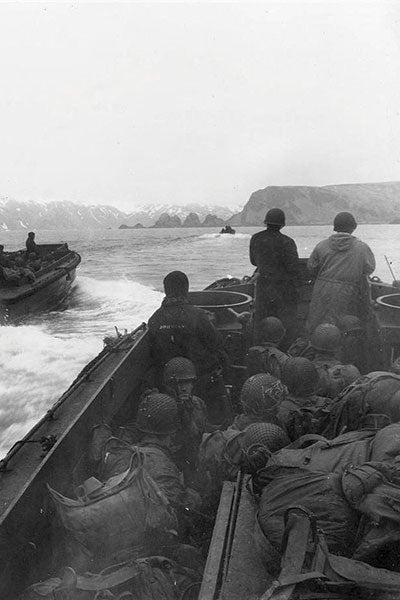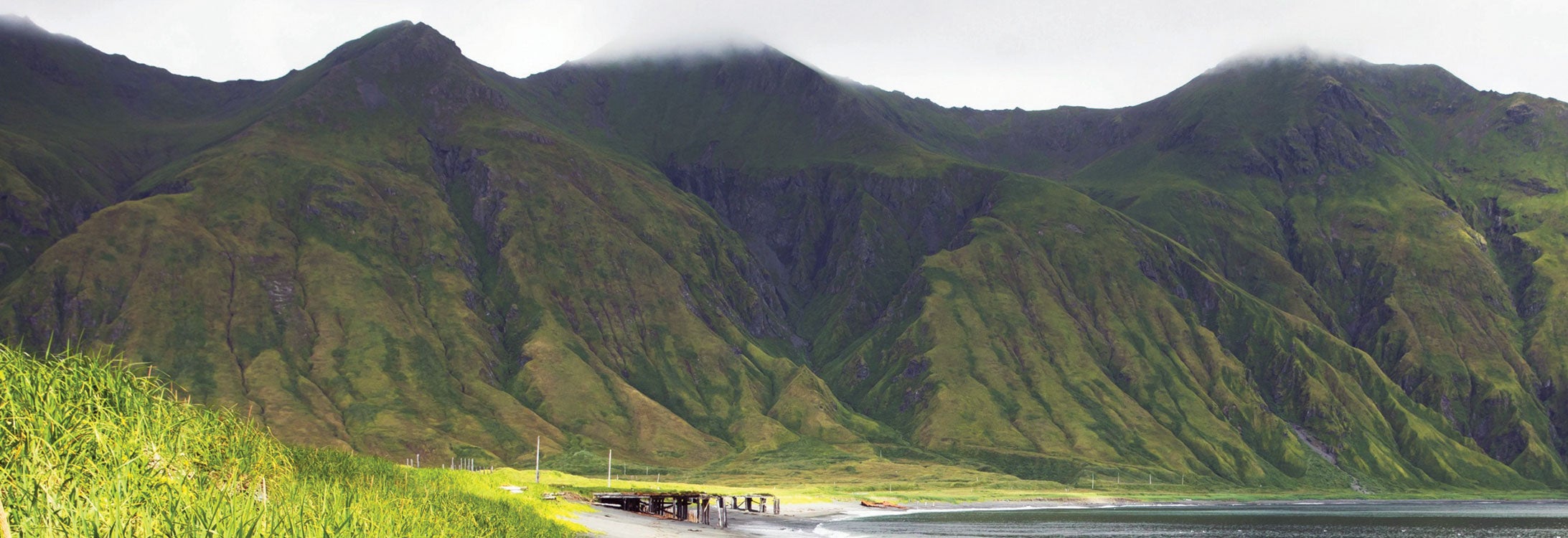ECU to explore WWII battle site in Alaska
Coastal resources management doctoral student Dominic Bush is part Native Aleut, so when he learned of a World War II battle between Japanese and American forces on the Alaskan island of Attu, he jumped at the chance to study it.
With the help of a $707,000 grant from the National Oceanic and Atmospheric Administration’s Office of Ocean Exploration and Research, he’ll be spending this summer documenting the cold-water marine environment and locating and recording the remains of ships, aircraft and other military vehicles lost during the battle. The research by him and Jason Raupp, assistant professor of maritime studies, may provide a foundation for further work to find missing-in-action personnel.
Bush got interested in the history of Attu during a spring 2020 battlefield archaeology class led by Jennifer McKinnon, assistant professor of history and maritime studies, who encouraged him to apply for the grant.

Doctoral student Dominic Bush is studying a World War II battle between Japanese and American forces that took place on the Alaskan island of Attu. The battle was the first amphibious invasion completed by the U.S. Army.
“My maternal grandmother is the daughter of a full-blooded Chugach woman and a Danish sailor,” Bush said. “I’ve been aware of my Aleutian heritage my entire life but was never told much about it. As the pandemic shut down everything, I decided to completely dedicate myself to this class assignment and learn everything I possibly could about the … Battle of Attu.”
The battle took place May 11-30, 1943. Bush said the three weeks of combat by land, sea and air resulted in the loss of nearly 600 U.S. service members, with an additional 3,000 injured. The entire 2,500-person Japanese garrison, apart from 29 prisoners of war, died during the battle.
In June 1942, in a move coordinated with the Battle of Midway, the Japanese military took over Attu and nearby Kiska, Bush said. Historians speculate it was either a distraction from Midway, an attempt to provide northern flank protection for the Japanese naval fleet approaching Midway or an effort to establish air bases to either attack mainland Alaska and the West Coast or prevent a northern U.S. invasion of Japan.
“The Unangan on Attu were shipped to Japan as prisoners of war, and although they were allowed to return to the U.S. in 1945, they were barred from ever returning to their home island,” Bush said.
Attu is the westernmost part of North America and the largest uninhabited island in the U.S., Raupp said, and it presents a logistical challenge. It’s part of the Aleutian Islands WWII National Monument, it remains relatively unknown to the American public and it is referred to as the “Forgotten Battle.”
According to Bush and Raupp, some of the battle’s remains on the island have been documented, but the underwater battlefield has been ignored. Bush said the waters around Attu likely contain up to 10 U.S. aircraft, nine Japanese aircraft, nine U.S. landing craft, three Japanese ships and numerous smaller barges and other watercraft.
“Together, these sunken vessels represent a yearlong occupation of Attu and the attempts by the U.S. military to remove the foreign force,” he said. “It was the first amphibious invasion completed by the U.S. Army and only the third assault of this kind by the U.S. during WWII. Lessons learned from the Attu campaign were instrumental in forming mission plans for the subsequent island-hopping campaign that eventually led to the Allied victory in the Pacific.”
